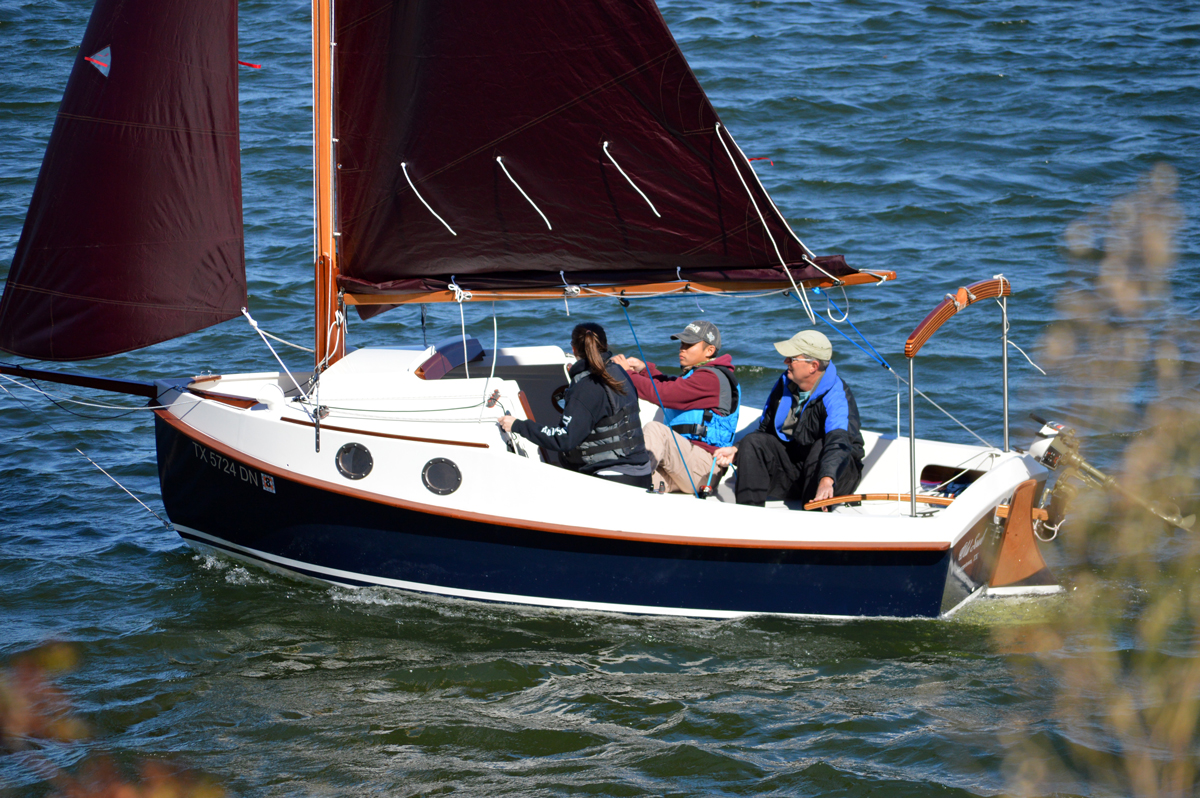Sunday, June 15, 2014
Filleting and Glassing Bow and Cuddy
There is not much to report but Jan thinks I should keep people up-to-date. Around May 18, I did some filleting in the bow area.
The fillets are pretty ugly--you have to practically stand on your head to get at the lower ones. Some of the builders do a beautiful job in here although I don't know how they do it--I did the best I could. This area will be filled with foam and never seen again so I'm not too concerned about appearances--mainly I need the fillets to be strong and provide smooth curves for the fiberglass cloth
Here I've added the fiberglass cloth and resin on May 20:
Looks pretty horrible. Again, I did the best I could. As I said it is very hard to reach and there are some tight compound curves for the cloth to conform to as much as possible. In the very bottom corner where I want to make sure there is a good seal, I poured in some more epoxy, approximately 1/2" deep.
Today (June 15), the weather was unseasonably cool. It was about 77 degrees in the garage, so I decided to get some more filleting done in the "cuddy" area.
I was able to get the fillets smoothed out fairly well, although still having to get into some rather contorted positions to get to the lower fillets on the floor joists. They don't look all that pretty, but the cloth should go on fine and they will be hidden under the floorboards.
I did the upper fillet to the port side back in early June when the garage was about 84 degrees. I don't know why, but at the end you can't see in this photo the epoxy began curing much sooner than I expected. I should have had about four hours before it set to the point I could no longer smooth it, but after waiting about one hour it had become way too hard. So there will be a lot of sanding and grinding to do there. I won't do any more of this kind of work until late September, unless we get some more very cool weather in the summer. There are other things I can do in the meantime--e.g., more work on the spars, and I may start on the floorboards even though the cuddy filleting may not all be finished.
Subscribe to:
Post Comments (Atom)




In the warmer months (and yes, it gets warm in Minnesota!) I set an alarm clock at 45 minutes to check on the fillets. I also don't do nearly as much as I would in cooler climes - maybe just one bay instead of three. There's an exponential difference in how quickly it sets between around 75 degrees and 85 degrees. I recall one time I went to dinner, came back, and everything was set after 90 minutes when the day before, I had almost 4 hours before it set. I'd suggest, instead of waiting until September, do one bay at a time. At least that way you'll make incremental progress.
ReplyDeleteGood point. And in fact I'm learning (every day on this project provides a learning opportunity it seems)--I only did a little over one bay even though it was only 77 degrees. I did the front and back of one floor joist and the front side only of the next one. I also did about one third of the lower panel-to side panel joint on the starboard side. Although you can't see it, the fillet ends just past the right edge of the picture.
ReplyDeleteIt's a little late in your case but working wet-on-wet is how I tackled the bow area. Since it needs biaxial tape I simply did the best job I could on the fillets and before the epoxy kicked I immediately applied the biaxial tape. This ensures a good chemical bond and levels out the fillets and eliminates the need for fillet sanding. It takes ape arms to reach inside that spot. I was awkward and I didn't enjoy it.
ReplyDeleteI've read about that method before, but completely forgot about it. I wish I had remembered at the time--might have been a big improvement. I did apply the tape right after "thin-film set" though so got a good chemical bond. A few hours after that I applied the fiberglass cloth, which was by far the hardest to get smoothed out.
DeleteYes, what Bill says is true. One other thing I'll add is you might not want to do that in very visible areas until you have the recipe down. This is because wet on wet often causes small bumps where your fingers and whatnot shape the 'glass. I'm having this issue now in the cabin itself, where those long, important 9 oz layers went on wet after I put the fillet down at the hull/topside joint. They cured bumpy and weird, so I need to go back over them with some sanding and a filler fillet to smooth it out. If this were in the laz or under the floorboards, I wouldn't care, but given it's the cabin, it has to be taken care of. Of course, that's why I'm typing about it instead of tackling it because I'm avoiding it. The same technique in the bow area and the aft cabin wall/cockpit decking came out fine -- done after the cabin, obviously.
Delete